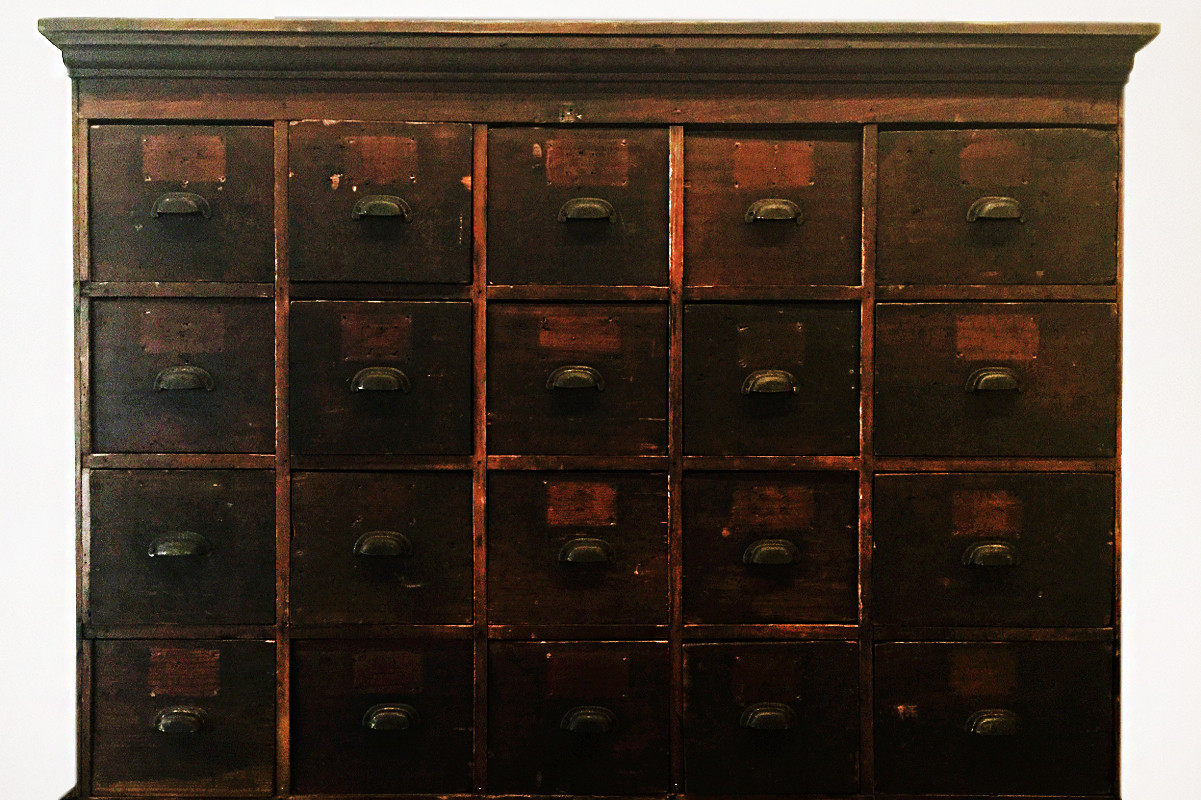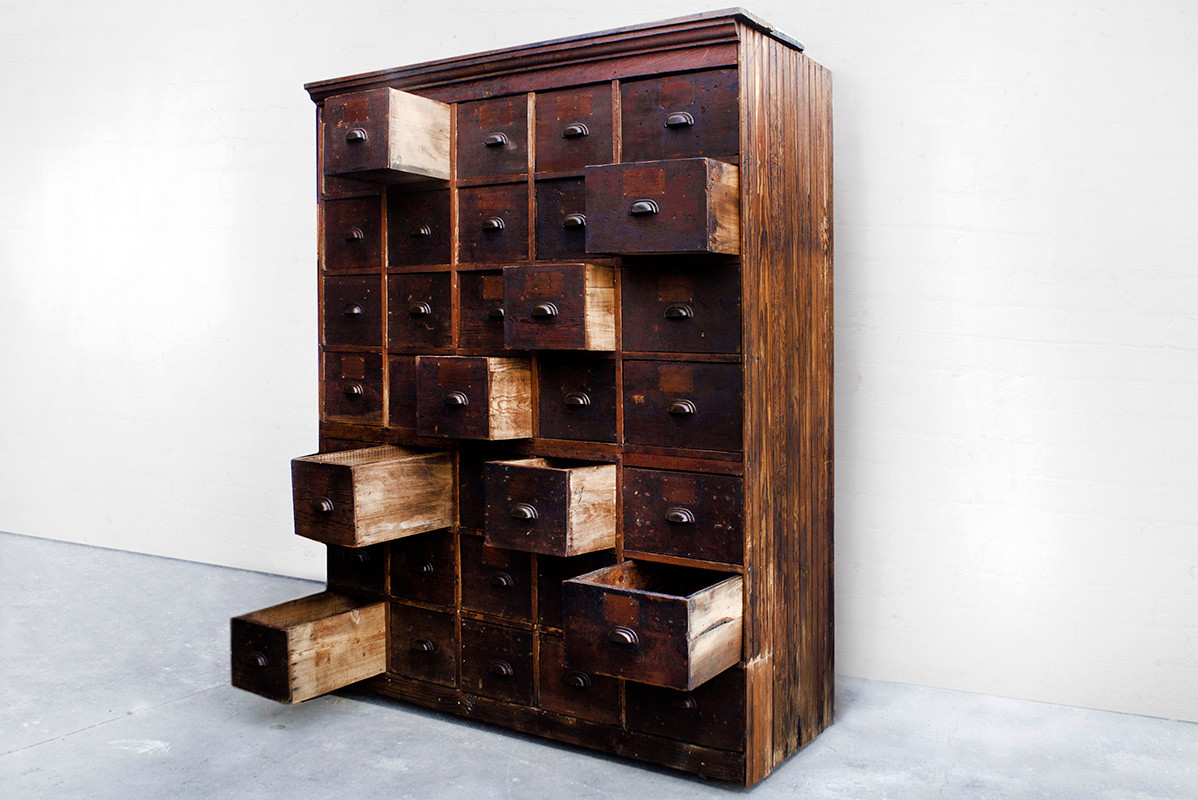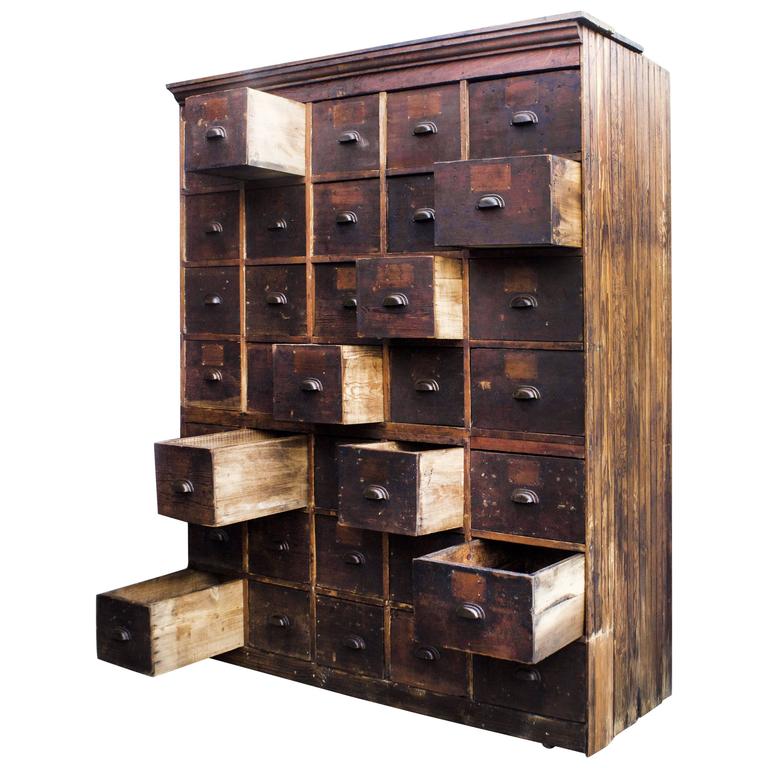History and Origins of Antique Multi-Drawer Cabinets

Antique multi-drawer cabinets, often referred to as chests of drawers, have a rich history spanning centuries and cultures. These versatile pieces of furniture have evolved from simple storage solutions to intricate works of art, reflecting the changing tastes and needs of society.
Evolution of Multi-Drawer Cabinets, Antique multi drawer cabinet
The evolution of multi-drawer cabinets can be traced back to ancient civilizations. Early forms of chests with drawers appeared in ancient Egypt, Greece, and Rome, primarily serving as storage for clothing, jewelry, and other valuable possessions. These early cabinets were often made of wood, with simple designs and limited drawer capacity.
During the Middle Ages, the use of multi-drawer cabinets became more widespread in Europe. These cabinets were typically made of oak or other durable woods, with hand-cut joinery and elaborate carvings. As the Renaissance period unfolded, cabinets became more refined, incorporating classical motifs and intricate ornamentation.
Prominent Styles and Design Elements
Antique multi-drawer cabinets exhibit a diverse range of styles and design elements, reflecting the artistic trends of different periods and regions.
- Renaissance: Cabinets from this era often featured classical motifs, such as pilasters, pediments, and scrolled brackets. They were frequently crafted from walnut or cherry wood and adorned with intricate carvings and inlays.
- Baroque: Baroque cabinets were characterized by their opulent designs, with elaborate carvings, gilded surfaces, and marquetry. They often featured multiple drawers with ornate handles and decorative feet.
- Rococo: Rococo cabinets emphasized elegance and grace, with flowing curves, delicate carvings, and pastel colors. They frequently incorporated shells, flowers, and other natural motifs.
- Georgian: Georgian cabinets were known for their simplicity and functionality. They were typically made of mahogany, with clean lines and understated ornamentation.
- Victorian: Victorian cabinets were highly decorative, with elaborate carvings, stained glass, and often featuring a mix of styles, such as Gothic and Renaissance influences.
Construction Techniques and Materials
Antique multi-drawer cabinets showcase a wide array of construction techniques and materials, reflecting the craftsmanship and technological advancements of different eras.
- Wood Types: Antique cabinets were often crafted from durable hardwoods, such as oak, walnut, mahogany, cherry, and maple. The choice of wood depended on its availability, strength, and aesthetic appeal.
- Joinery Methods: Traditional joinery techniques, such as mortise and tenon, dovetail, and box joints, were employed to create strong and durable cabinets. These methods, often done by hand, ensured the longevity of the furniture.
- Finishes: Antique cabinets were often finished with a variety of techniques, including oil-based paints, varnishes, and waxes. These finishes protected the wood and enhanced its natural beauty.
Regional Variations
Antique multi-drawer cabinets also exhibit regional variations, reflecting local traditions and preferences. For example, French cabinets often featured intricate marquetry and delicate carvings, while English cabinets were known for their sturdy construction and understated elegance.
Types and Styles of Antique Multi-Drawer Cabinets

Antique multi-drawer cabinets come in a wide array of types and styles, each reflecting the distinct design sensibilities and practical needs of their era. These cabinets, often crafted from exquisite materials and intricate details, are not only functional pieces of furniture but also captivating historical artifacts. Their enduring appeal lies in their ability to blend functionality with aesthetic artistry, showcasing the evolution of craftsmanship and design throughout history.
Categorization by Function and Intended Use
Antique multi-drawer cabinets were designed for a variety of purposes, with their function dictating their form and features. Here’s a breakdown of common types:
- Chests of Drawers: These are perhaps the most basic and ubiquitous type of multi-drawer cabinet, typically designed for storing clothing and linens. They often feature a simple construction with a rectangular box shape and a series of drawers that slide out on wooden runners. Chests of drawers were widely used in homes across different social classes and became increasingly ornate and elaborate in the 18th and 19th centuries.
- Bureaus: Similar to chests of drawers, bureaus are distinguished by their larger size and often include a mirror or a writing surface. They were primarily used for storing personal belongings, including clothing, jewelry, and writing materials. Bureaus evolved into more elaborate forms in the 18th century, with decorative details like veneers, marquetry, and carving becoming increasingly common.
- Vanity Tables: These cabinets are specifically designed for dressing and grooming. They often feature a central mirror and drawers for storing cosmetics, toiletries, and other personal items. Vanity tables were particularly popular in the 18th and 19th centuries, when personal hygiene and appearance became increasingly important.
- Writing Desks: These cabinets are characterized by their slanted writing surface, drawers for storing stationery and writing implements, and often a secret compartment for private papers. Writing desks were essential for both home and office use, and they were often crafted with elaborate details to reflect the owner’s status and taste.
Styles and Distinctive Features
Antique multi-drawer cabinets are further categorized by their stylistic features, reflecting the dominant design trends of their time. Each style is characterized by specific design elements, materials, and craftsmanship, offering a glimpse into the aesthetic sensibilities of different eras.
Queen Anne Style
Queen Anne style, popular in the early 18th century, is characterized by its elegant curves and graceful lines.
- Distinctive Features: Queen Anne cabinets often feature cabriole legs, which are curved and S-shaped, and a serpentine front, adding a sense of movement and fluidity to the design. The drawers are typically fitted with brass or pewter pulls, often in the form of shells or scrolls. The wood used for Queen Anne cabinets was often walnut, mahogany, or cherry, finished with a rich, polished sheen.
- Prominent Makers: Notable makers of Queen Anne style cabinets include Thomas Chippendale, who is credited with popularizing the style, and John Goddard, who was known for his intricate marquetry work.
Chippendale Style
Chippendale style, named after the renowned English furniture maker Thomas Chippendale, flourished in the mid-18th century.
- Distinctive Features: Chippendale cabinets are known for their bold, geometric designs and intricate carvings. They often feature straight legs, sometimes with a slight taper, and elaborate decorative details like rococo scrolls, Chinese motifs, and gothic arches. The wood used for Chippendale cabinets was often mahogany, walnut, or oak, finished with a dark, rich stain.
- Prominent Makers: Thomas Chippendale himself is considered the most prominent maker of Chippendale style cabinets, and his designs are still widely admired today. Other notable makers include John Linnell and George Hepplewhite, who contributed to the development of the style.
Hepplewhite Style
Hepplewhite style, popular in the late 18th century, is known for its delicate elegance and refined details.
- Distinctive Features: Hepplewhite cabinets often feature straight, tapered legs, often with spade feet, and a delicate, oval-shaped back. They are typically adorned with delicate, neoclassical motifs, such as urns, garlands, and festoons, often executed in inlaid wood or painted decoration. The wood used for Hepplewhite cabinets was often mahogany, satinwood, or birch, finished with a light, natural stain.
- Prominent Makers: George Hepplewhite, the namesake of the style, is considered a key figure in the development of Hepplewhite design. Other notable makers include Thomas Sheraton and Robert Adam, who contributed to the refined elegance of the style.
Sheraton Style
Sheraton style, named after the English furniture maker Thomas Sheraton, flourished in the late 18th and early 19th centuries.
- Distinctive Features: Sheraton cabinets are characterized by their simple, geometric lines and restrained ornamentation. They often feature straight, slender legs, often with a reeded or fluted design, and a flat, rectangular top. The wood used for Sheraton cabinets was often mahogany, satinwood, or rosewood, finished with a light, natural stain.
- Prominent Makers: Thomas Sheraton himself is considered the most prominent maker of Sheraton style cabinets, and his designs are known for their refined elegance and meticulous craftsmanship. Other notable makers include James Gillow and William Bullock, who contributed to the development and popularity of the style.
Identifying and Appraising Antique Multi-Drawer Cabinets: Antique Multi Drawer Cabinet

Identifying and appraising antique multi-drawer cabinets requires a keen eye for detail and a comprehensive understanding of their history, construction, and value drivers. This guide will equip you with the knowledge and tools to distinguish authentic antique cabinets from modern reproductions and assess their worth accurately.
Identifying Authentic Antique Multi-Drawer Cabinets
Authenticating antique multi-drawer cabinets involves a meticulous examination of various aspects, including hallmarks, materials, construction techniques, and design elements. These features provide valuable clues about the cabinet’s age, origin, and craftsmanship.
- Hallmarks: Antique cabinets often bear hallmarks, stamps, or labels that indicate the maker, date of manufacture, or origin. These markings can be found on the underside of the cabinet, inside drawers, or on the hardware. For example, a cabinet with a maker’s stamp from a renowned cabinetmaker would significantly increase its value.
- Materials: The materials used in construction can reveal a cabinet’s age and origin. Antique cabinets are often made from high-quality hardwoods like mahogany, walnut, oak, or cherry. These woods were prized for their durability, beauty, and ability to age gracefully. The presence of specific woods or unique finishes can also indicate a cabinet’s origin or era.
- Construction Techniques: Antique cabinets are often characterized by traditional construction techniques like dovetail joints, mortise and tenon joints, and hand-cut moldings. These techniques were used for strength, durability, and aesthetic appeal. Examining the joints, moldings, and overall construction can help identify the cabinet’s age and craftsmanship.
- Design Elements: The design elements of antique cabinets can reveal their stylistic influences and period. For example, a cabinet with intricate carvings, elaborate hardware, or a specific style of legs can indicate a particular era or design movement. Familiarizing yourself with the evolution of cabinet design over time can aid in identification.
Factors Influencing Value and Appraisal
The value of an antique multi-drawer cabinet is determined by a combination of factors, including age, condition, rarity, provenance, and maker. These factors work in concert to establish the cabinet’s historical significance and desirability in the market.
- Age: Generally, older antique cabinets are more valuable than newer ones, especially if they are in good condition and have a strong provenance. The age of a cabinet can be determined by examining its construction techniques, materials, and hallmarks.
- Condition: The condition of an antique cabinet is crucial to its value. Cabinets in excellent condition, with minimal wear and tear, are more desirable and command higher prices. Condition is assessed based on factors like the cabinet’s structural integrity, the quality of its finish, and the presence of any damage or restoration.
- Rarity: Rare antique cabinets, produced in limited quantities or with unique features, are highly sought after by collectors and often command premium prices. The rarity of a cabinet can be determined by researching its maker, style, and any unique design elements.
- Provenance: Provenance refers to the documented history of an antique cabinet, including its previous owners and locations. A well-documented provenance adds significant value to an antique cabinet, as it provides a clear record of its history and authenticity. For example, a cabinet with a documented connection to a historical figure or a notable collection would be considered more valuable.
- Maker: The maker of an antique cabinet is a significant factor in its value. Cabinets made by renowned cabinetmakers or workshops are often highly sought after by collectors and museums. Identifying the maker can involve researching hallmarks, style, and construction techniques.
Researching and Documenting History and Provenance
Researching and documenting the history and provenance of an antique multi-drawer cabinet is essential for enhancing its value and authenticity. This process involves meticulous investigation and careful documentation of the cabinet’s past.
- Identifying the Maker: Researching the maker of the cabinet can be done by examining hallmarks, researching historical records, and comparing the cabinet’s style and construction techniques to known works of specific makers.
- Tracing the Cabinet’s History: Investigating the cabinet’s history can involve researching auction records, estate records, and historical documents to identify its previous owners and locations. This can provide valuable insights into the cabinet’s journey and significance.
- Documenting the Provenance: Carefully documenting the provenance of an antique cabinet is crucial for establishing its authenticity and increasing its value. This involves gathering evidence, such as photographs, invoices, letters, and other documents that support the cabinet’s history.
An antique multi drawer cabinet holds memories and stories within its weathered wood. Each drawer, like chapters in a book, reveals a glimpse into the past. Just as those antique cabinets organize the past, a modern rittal 19 rack cabinet efficiently structures the present, offering a dedicated space for technology and innovation.
Both, in their own way, serve as a testament to the enduring power of organization and the art of preserving what matters most.
An antique multi drawer cabinet is a treasure trove of history and craftsmanship. Each drawer holds a story, whispering tales of bygone eras. If you’re looking to display your prized possessions, consider an antique glass front display cabinet.
These cabinets showcase your treasures with elegance, adding a touch of timeless charm to your space. Whether you prefer the rustic warmth of a multi drawer cabinet or the sophisticated allure of a glass front display cabinet, both are testaments to the enduring beauty of the past.
